Measurement is one of those math skills that we use pretty much every day. So, when we are teaching measurement it is crucial that we give our students the chance to experience working on their measuring skills in a meaningful way. What’s more, these measurement activities need to be fun and engaging!
Are you struggling to find the time to write your informal measurement unit plan? Fear not, our experienced primary teachers have done it for you! They have crafted five unit plans that will help you to teach measurement and help your class to learn how to measure volume, area, mass, and length using informal units.
Important Things to Remember:
When we are teaching measurement it can be tempting to think solely about using informal or formal measuring instruments. However, it is also important to create opportunities for your students to learn and use the skills of:
- selecting appropriate informal units
- identifying measurable attributes including length, capacity, and weight
- developing language associated with measurement
- estimating using informal units.
This unit includes 5 engaging lessons and an assessment task so that you can monitor your students’ understanding. It has been created to be delivered either as a stand-alone week of measurement focus lessons or as part of a broader multi-strand plan.
Each lesson begins with an engaging lesson hook and includes teacher instruction, guided or independent measurement activities, and ideas for wrapping up the lesson. You’ll also find suggestions regarding ways to extend knowledge and understanding for more confident learners and how to provide support for less confident learners.
Lesson 1
Have you ever given your class the opportunity to measure the length of objects with dinosaur footprints? In Lesson 1 of this brilliant unit, students complete a Measuring with Dinosaur Footprints Worksheet and use dinosaur footprints iteratively (repeated use of the same unit), to measure the length of various objects around the classroom. After recording their results, students compare them with peers who have used bigger and smaller dinosaur footprints, as well as those who used the same size informal unit.
Lesson 2
In Lesson 2, students begin by making a direct comparison between a polar bear and objects around the classroom while developing the language of measurement. Students then enjoy the hands-on experience of finding objects with different lengths around the classroom and measuring them using informal units e.g. blocks, Informal Units Rulers, Bear Squares.
Don’t forget the importance of giving your class the opportunity to develop language associated with measurement! Don’t underestimate the impact of creating a measurement word wall display in your classroom. Choose a word list to suit the needs of your class by using our customizable Measurement Word Wall.
For more ideas and information about using math terminology read our blog The Importance of Using Math Terminology.
Lesson 3
Measuring, comparing, and ordering height using informal units is the name of the game in Lesson 3. Students learn that height is the measurement of an object from its base to its top and choose an informal unit to measure their height. The next step of this measurement activity is to order the height of three classmates, as well as their own, from the shortest person to the tallest person. The final and all-important part of this lesson is reflection which encourages the student to analyze their results and develop their use of measurement language.
Do you have students in your class that need a challenge? If you do, all of our lesson plans include ideas of how to extend their learning. In this lesson, more confident learners are encouraged to estimate the heights before measuring them and explore the possibility of skip counting to complete their measurements.
Lesson 4
It is important to include mathematics investigations when teaching measurement and all areas of math. Lesson 4provides your class with the opportunity to apply their knowledge and understanding of measuring length using informal units to a real-world situation. In this investigation, the school principal needs to find helpers to give a signal to be quiet during assemblies. The assemblies take place in a large space so he needs people with long fingers so that everyone can actually see the signal!
This teaching resource includes:
- teacher notes, detailing a range of important information about the investigation
- a detailed description of the investigation for students, including step-by-step instructions
- collecting and recording data worksheet
- reflection questions.
Lesson 5
What better way to begin the penultimate lesson of this unit than with the Ballard of Dizzy D. This YouTube video is a great way to review how objects can be measured using informal units and to develop language associated with measurement.
After a cracking start, lesson 5 goes on to revisit the use of informal measurement tools. All you need to do is set up 3 workstations and monitor your students as they demonstrate their knowledge and understanding! The three rotational activities include:
- Ordering a group of objects (10-15) from shortest to longest.
- Measuring the length of several classroom objects using informal units e.g. cubes, Informal Units Rulers, Bear Squares. Record the lengths.
- Measuring the height of another student three times using a different-sized dinosaur footprint each time.
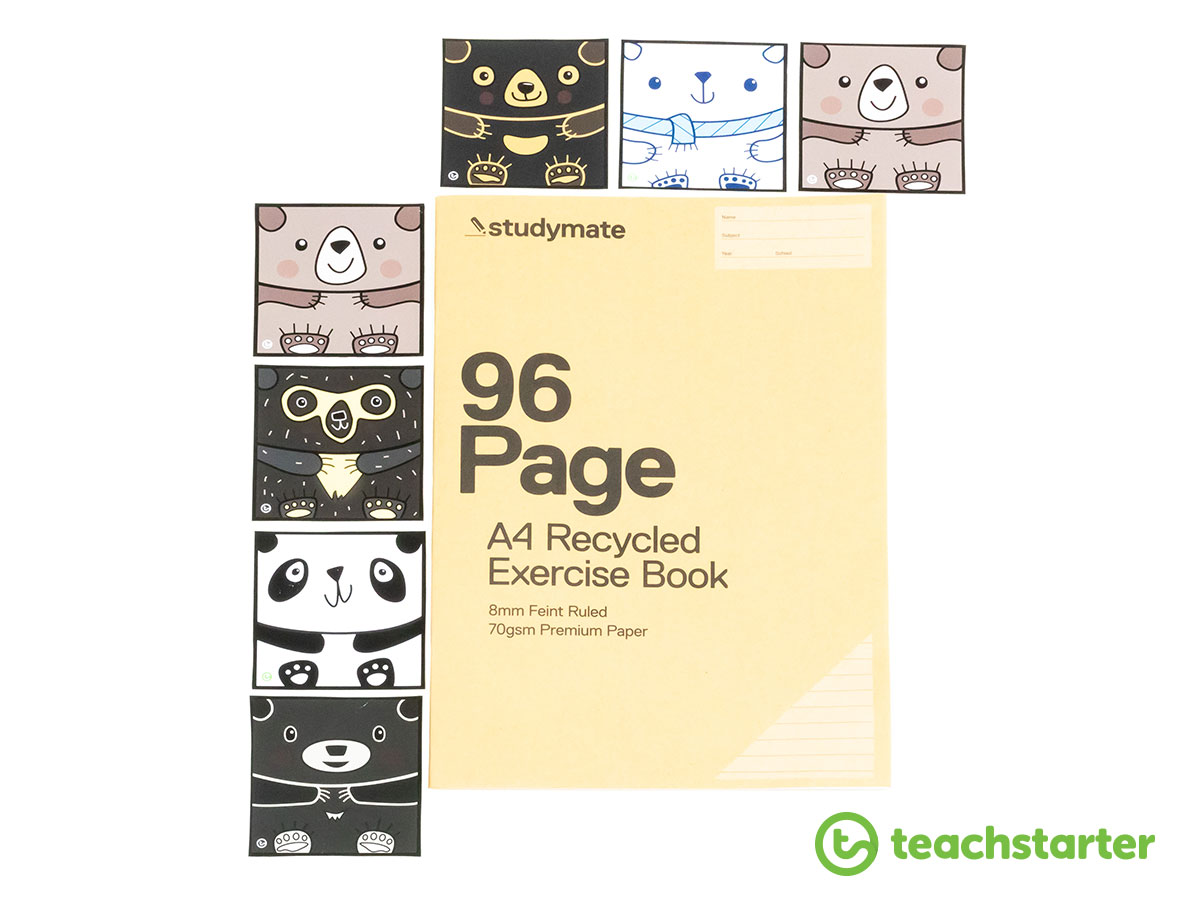 Lesson 6
Lesson 6
After completing these measurement activities, your class is sure to be ready to complete an assessment task. To make life easy for you we have created a worksheet that is directly linked to the lessons in this unit and perfect to use as an assessment task. This task involves students measuring objects in squares, comparing their lengths, and then ordering the objects from shortest to longest. What’s more, an answer sheet has also been included.
And so, there you have it! This mini-unit includes some of the best measurement activities around and ticks a lot of boxes.
I hope that you are measuring high on the feeling ready and prepared scale for your next informal measurement unit.

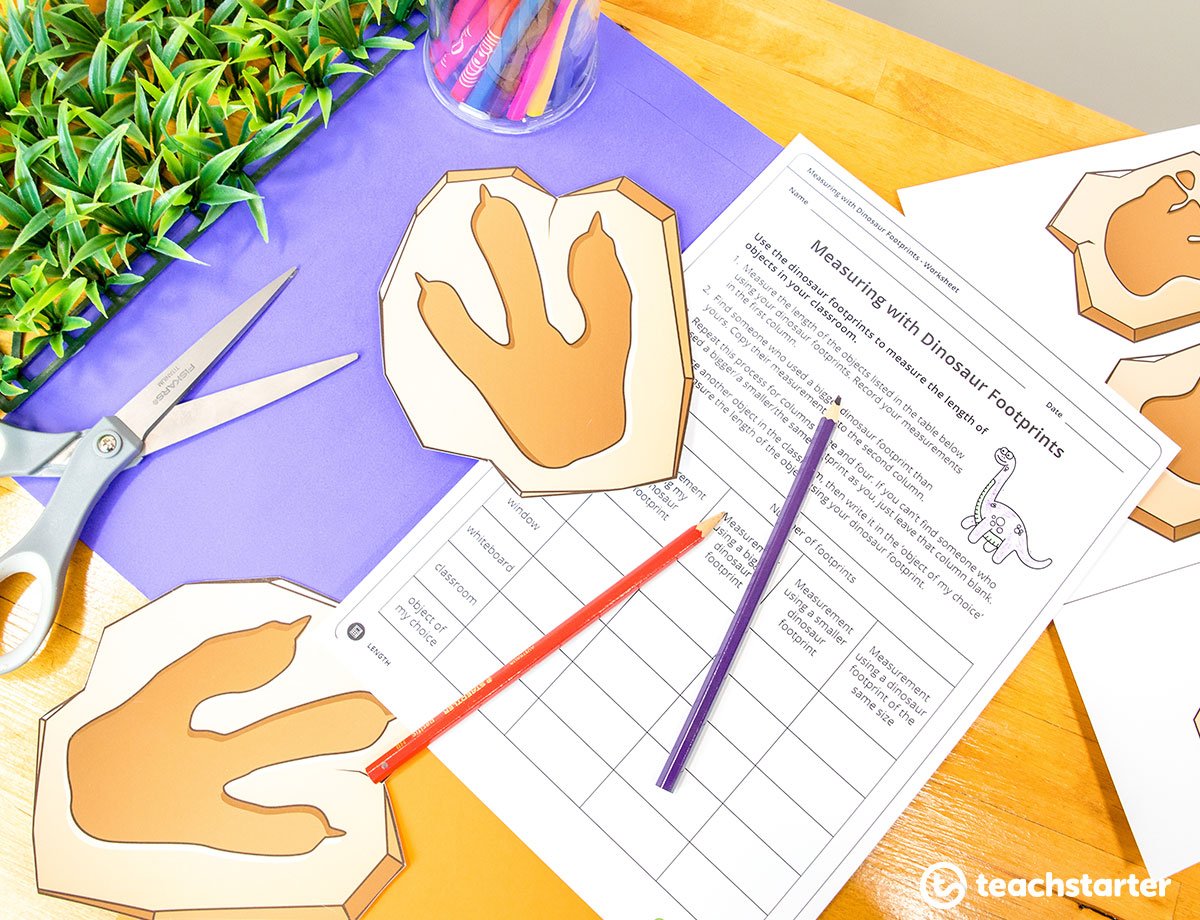
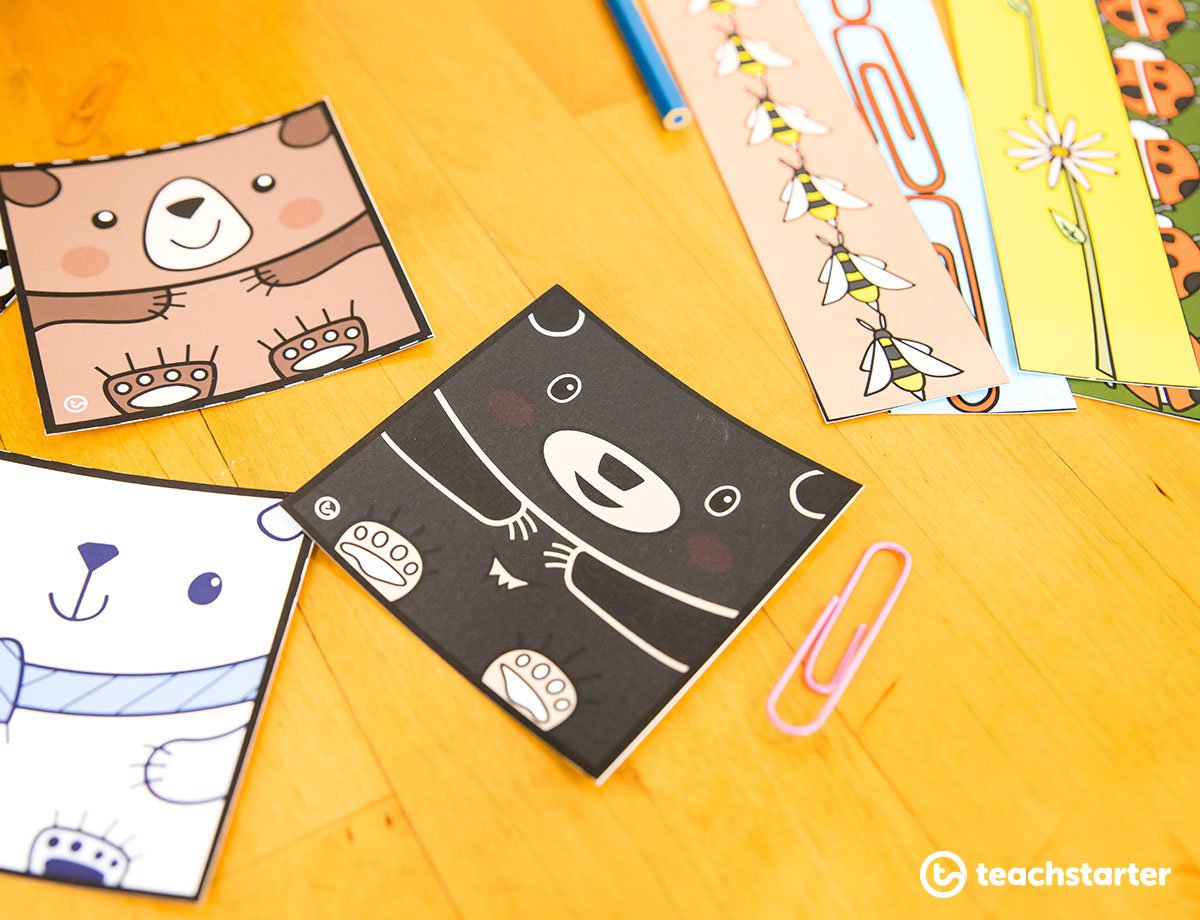
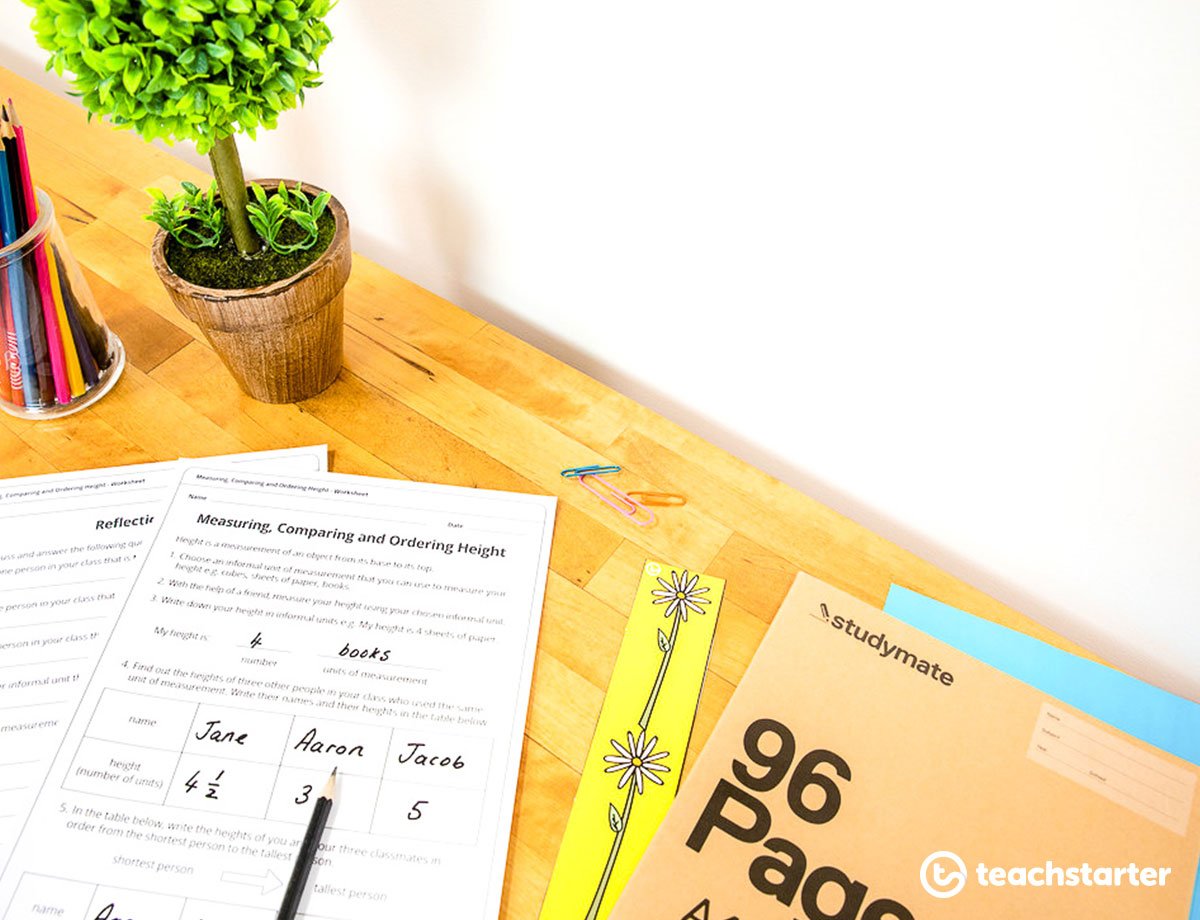
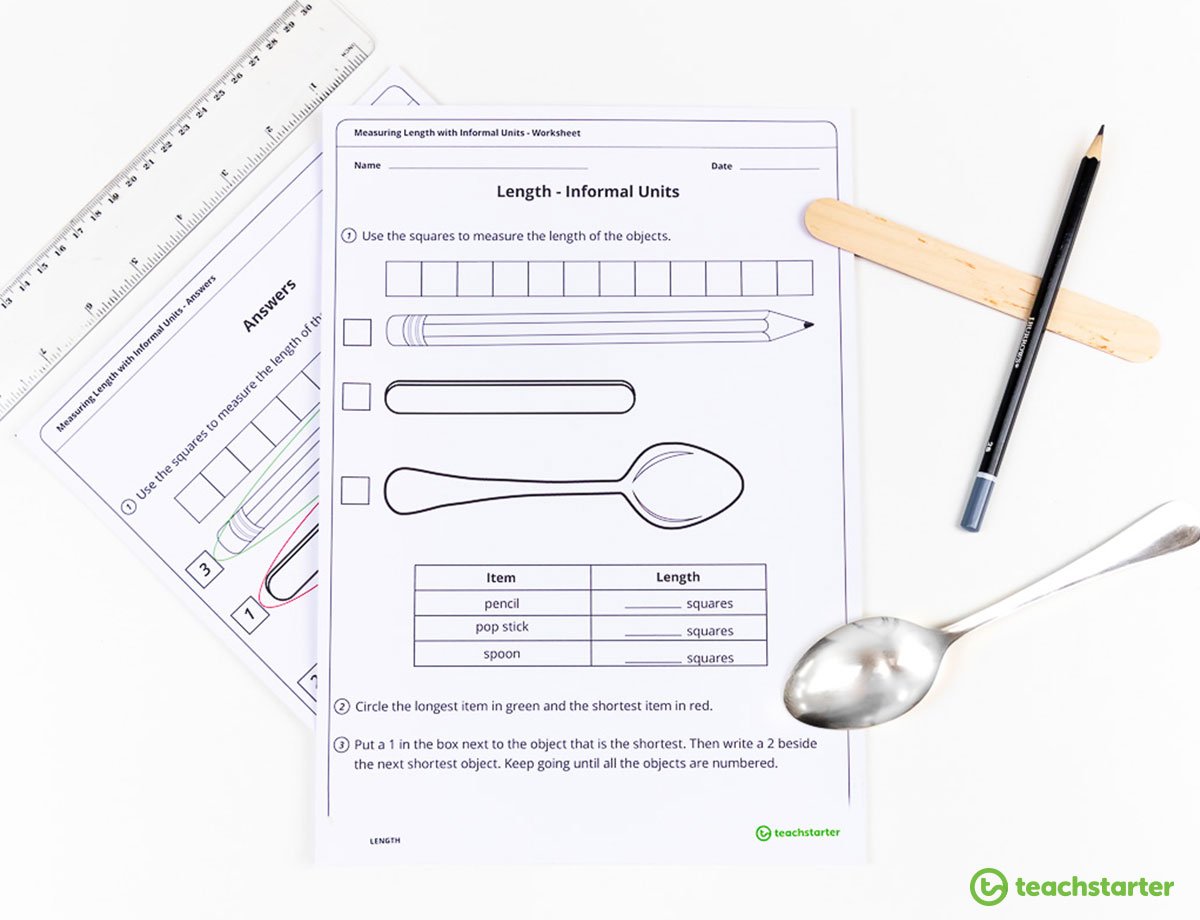






Comments